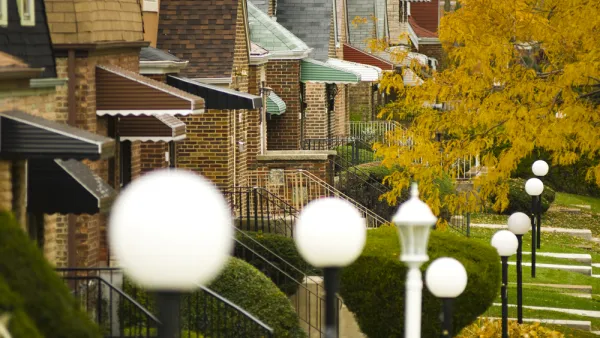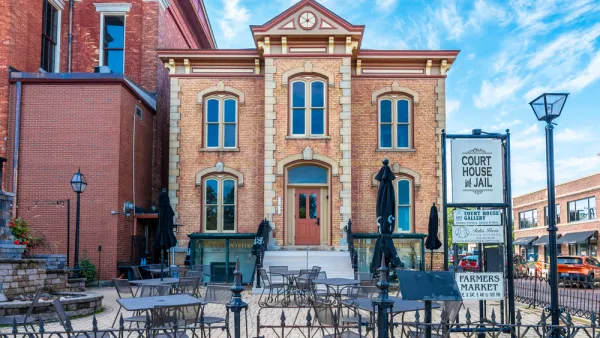Ben Austen traces how foreclosures, crime, and depopulation have decimated areas in the South and West Sides of Chicago, and the 'do-it-yourself empowerment zones' that are trying to make use of vacant properties and turn around these neighborhoods.
"As hard as the foreclosure crisis hit Chicago, its force has been felt with an unevenness that can seem fiendishly unjust. The U.S. Postal Service, which tracks these numbers, reported that 62,000 properties in Chicago were vacant at the end of last year, with two-thirds of them clustered as if to form a sinkhole in just a few black neighborhoods on the South and West Sides. Currently about 40 percent of all homeowners in these communities owe more on their mortgages than their homes are worth, and countywide 80,000 foreclosures are wending their way through circuit court."
As we've noted before, Chicago story has become a tale of two cities: the city's hottest urban center surrounded by increasingly impoverished neighborhoods.
“'We’re not like Detroit, cordoning off sections of the city,' Benet Haller, Chicago’s principal adviser for planning and design, told me. 'But we are like London or Jakarta, with a hyperdense core — a zone of affluence — and something else beyond.' What the housing crisis has revealed, in stark relief, is a Chicago that already looks increasingly like this vision of a ring city, with the moneyed elite residing within the glow of that jewel-like core and the largely ethnic poor and working-class relegated to the peripheries, the banlieues."
"The conundrum that exists in Chicago, though, is what happens to the 'something else beyond' now that the center is prospering," writes Austen. "For the people trying to make their lives in the areas that J. R. and his fellow activists are trying to save, the question is not at all a theoretical one. The way many of them see it, they’re being sacrificed so that the city can be reborn."
FULL STORY: The Death and Life of Chicago

Analysis: Cybertruck Fatality Rate Far Exceeds That of Ford Pinto
The Tesla Cybertruck was recalled seven times last year.

National Parks Layoffs Will Cause Communities to Lose Billions
Thousands of essential park workers were laid off this week, just before the busy spring break season.

Retro-silient?: America’s First “Eco-burb,” The Woodlands Turns 50
A master-planned community north of Houston offers lessons on green infrastructure and resilient design, but falls short of its founder’s lofty affordability and walkability goals.

Test News Post 1
This is a summary

Analysis: Cybertruck Fatality Rate Far Exceeds That of Ford Pinto
The Tesla Cybertruck was recalled seven times last year.

Test News Headline 46
Test for the image on the front page.
Urban Design for Planners 1: Software Tools
This six-course series explores essential urban design concepts using open source software and equips planners with the tools they need to participate fully in the urban design process.
Planning for Universal Design
Learn the tools for implementing Universal Design in planning regulations.
EMC Planning Group, Inc.
Planetizen
Planetizen
Mpact (formerly Rail~Volution)
Great Falls Development Authority, Inc.
HUDs Office of Policy Development and Research
NYU Wagner Graduate School of Public Service




























